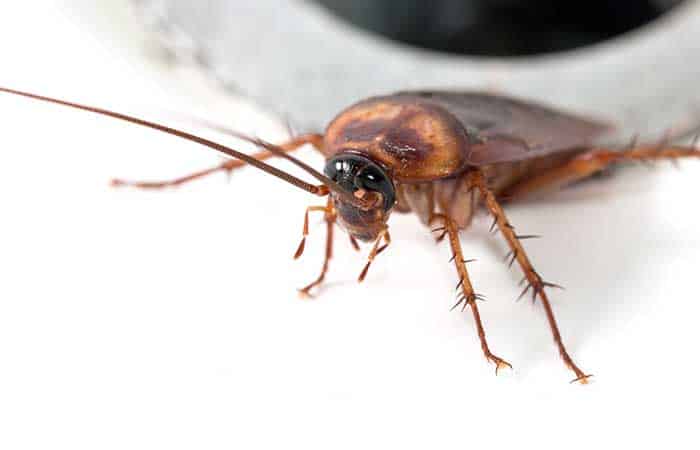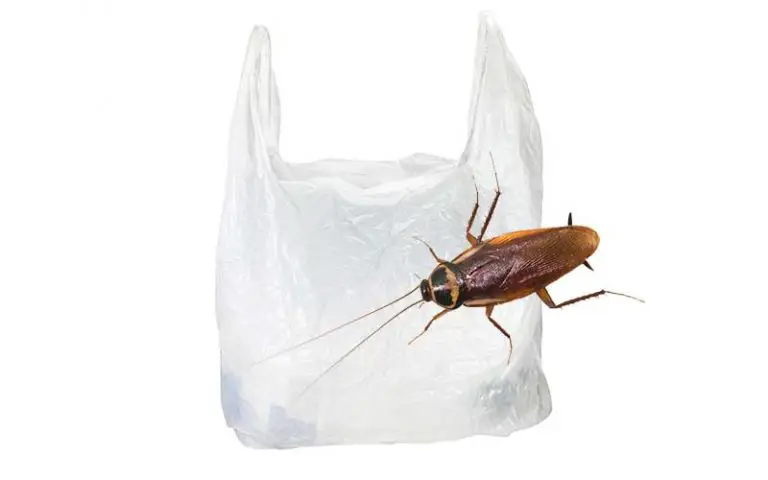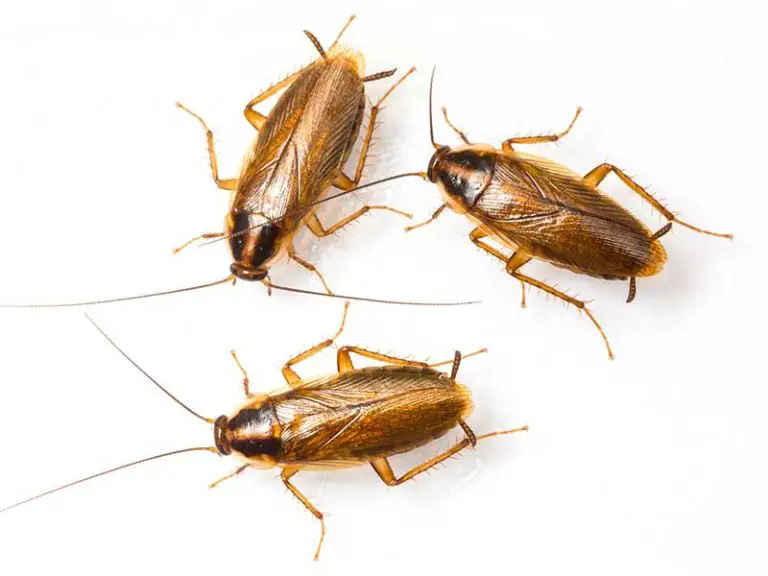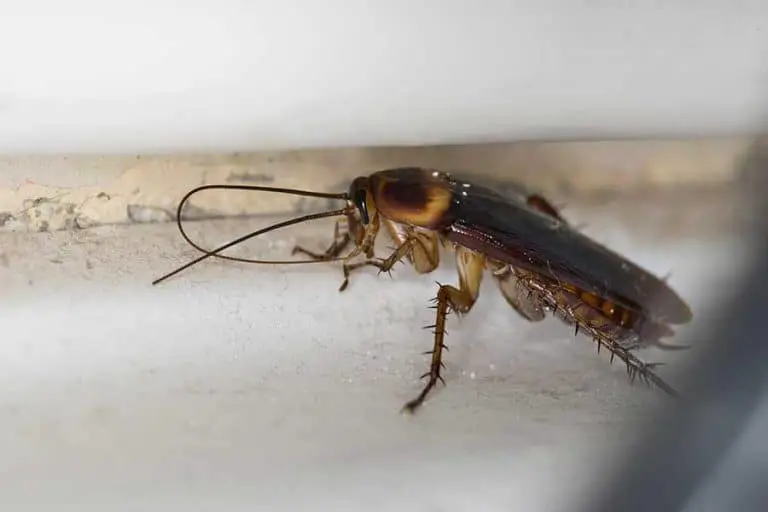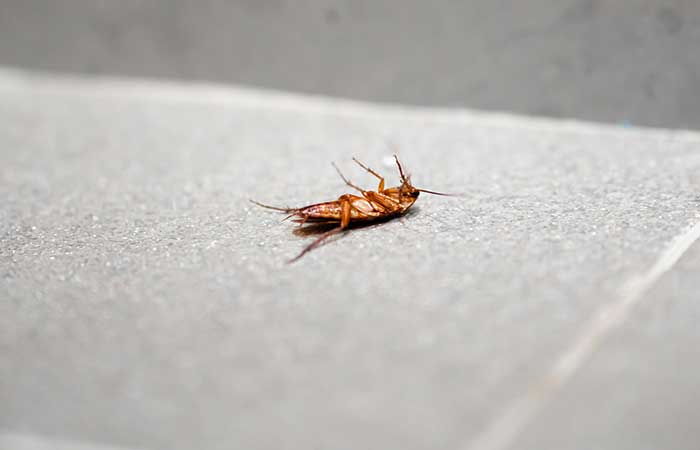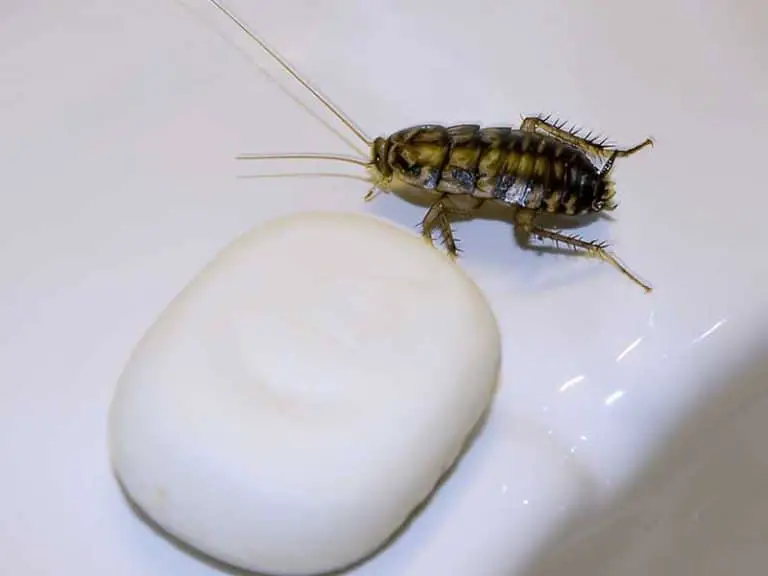Can Roaches See In The Dark?
If they weren’t so disgusting, cockroaches would deserve some serious respect for being one of the most resilient insects on the planet. They always seem to know when you’re coming, even in the dark. So it begs the question, can roaches see in the dark?
Not only can roaches see in the dark, but they can also do so rather well. Thanks to a rare ability to pool photons of light over some time, the cockroaches’ nervous system then gathers the information from that pool and sums it up.
In a sense, it’s like a computer, gathering all of the available information in a room, without any optical assistance, before relaying that information as a visual rendering to someone standing in a pitch-black room.
This ability to pool light and gather information is a rarity, only shared by dung beetles and a nocturnal species of bees. When it comes to cockroaches, it’s not the only thing that enables them to see so well in the dark.
How Do Cockroaches See So Well In Both Light And Dark?
Cockroaches see so well in either the light or the dark because they have 360-degree compound eyes that contain more than 2,000 photoreceptors. For a sense of scale, human beings have four. Roaches also have three simple eyes that allow them to detect white, black, light, and dark.
Because of how their compound eyes are situated, a roach can see all around itself and obtain thousands of different variations of an image. While they don’t see in color, their only limitation is red. A roach cannot see in red or infrared spectrums.
As if their visual advantages weren’t enough, roaches also have other sensory inputs that aid them in the dark. A roach’s antennae are nearly as effective as its eyes alone. They can detect and help the cockroach react to a large variety of stimulations.
- Barometric Pressure: Roaches can detect not only a storm’s approach but also how violent the storm is. They can do this with their built-in thermoreceptors and proprioceptors.
- Direction: A cockroach’s antennae can help it gauge the position of the sun and navigate in the direction it wants to go.
- Height and Width: Roaches can detect the height and width of obstacles in their path to aid them in crossing over the obstacle.
- Vibrations: A roach’s antennae inform it of movement when they detect tiny vibrations and air changes. They know you’re coming long before they ever see you.
- Food: Olfactory receptors on their antennae bind with air molecules to help roaches detect nearby food and water.
- Pheromones: When excreted by females, male roaches can locate them to mate, or find their way back to their nest.
Combined with their multifaceted eyesight capabilities, a cockroach’s antennae make it a virtual-navigation genius.
Can Roaches See In Color?
Cockroaches, like most insects with compound eyes, are bichromatic and see in a much higher frequency than humans do. For instance, humans cannot detect ultraviolet light, yet cockroaches can see in this spectrum easily.
Red, on the other hand, is completely invisible to roaches, yet they seem to be deterred by it. Contrary to popular opinion, roaches don’t necessarily fear the light or any colors of the spectrum. What they fear is what the light is associated with, and that is dangerous.
In 2017, a project was conducted at the California State Science Fair in which a hundred roaches were placed in five groups of 20 and exposed to different colors.
The results of the study concluded that roaches were repulsed by red light over any other color, with white, yellow, and blue deterring most to least in that order. Blacklight exposure seemed to confuse them and stopped them in their tracks.
While not a major scientific evaluation, it was an interesting exercise in determining what colors roaches can detect and whether or not they found those colors attractive or repulsive.
What Are The Functions Of Simple Eyes In Cockroaches?
The cockroach has enormous ocelli (simple eyes) that give it a very large field of view. The typical understanding of a cockroach’s ocelli is that they detect light and dark, like the ocelli in most other insects.
However, a roach’s ocelli gather the data from exposure to light, or lack thereof, and use it to modify how the compound eyes react to exposure to light, its intensity, or darkness.
The ocelli also play a large role in a roach’s activity levels. This makes sense considering that cockroaches are nocturnal and the less light perceived by their simple eyes, the more likely roaches are to come out.
Like the antennae and compound eyes, the ocelli of cockroaches aid them during their nocturnal and daytime activities, especially when all three sensors are combined.
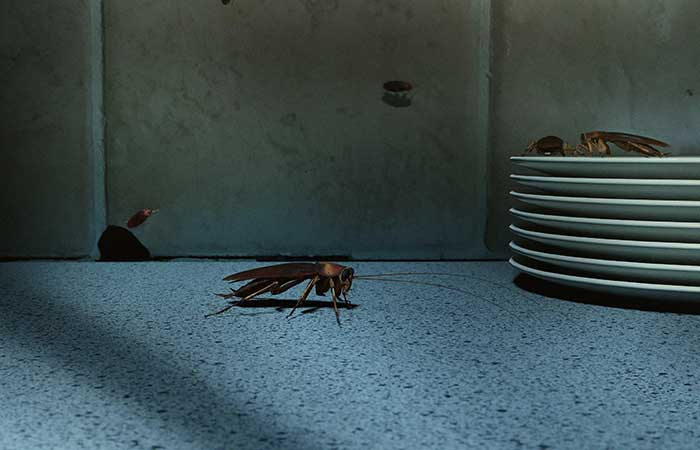
Will Leaving The Light On Keep Cockroaches Away?
Roaches are nocturnal creatures and their circadian rhythm—dictated by their eyes and antennae—keeps them on a relatively predictable cycle. When the sun goes down, roaches come out, therefore leaving the light on does help keep them away.
At the very least, it disrupts their rhythm and makes them more random. Cockroaches fear the source of the light and have an instinctive understanding that light exposure places them in danger.
Red light is a roach deterrent, even though it’s a color that they cannot see, they sense it in most respects and stay away. Ultraviolet light is also repulsive to cockroaches and also has strange effects on their behavior.
Ultraviolet light aids many insects in their day-to-day activities, such as bees seeking pollen, or detecting positive variations between flowers. With roaches, it has the effect of freezing them or confusing them.
The underlying cause of the effects of UV rays on cockroaches isn’t readily understood, but by studying their behavior, it’s easy to conclude.
Overall, besides their circadian rhythms dictating nocturnal activity, roaches just don’t prefer to be in the light.
Can Roaches See Us?
Not only can roaches see us, they likely detect us before we ever enter the room. Thanks to their 360 degrees of vision and antennae being extremely sensitive to vibrations and changes in the air, it’s highly unlikely that you’ll sneak up behind them either.
If anything can be said that’s negative about a roach’s visual abilities, it’s that the photoreceptors elongate the close they are to the roach’s body. At that level, the roach’s vision is slightly distorted.
Even with the distortion, however, the roach can still detect your movement through the photoreceptors and from its antennae.
Sneaking up on a roach with a shoe in hand is difficult. it knows you’re coming, it’s just a matter of who is quicker. Also, roaches can travel over 3mph. That doesn’t sound like much, but it’s pretty quick within the framework of a room.
All Things Considered
It’s not enough that cockroaches can withstand 900 times their body weight, resist a super blast of radiation, live without a head for a week, survive without food for a month, or run at 3mph. Now, they have super vision as well.
So it’s no longer merely a question of “can roaches see in the dark” and more of an understanding that there’s very little these insanely versatile and tenacious insects can’t do.

